13 Summer Melons to Try While They're In Season
From yellow watermelon and sugar baby to Christmas melon and Crenshaw, there are lots of sweet, juicy options to explore.
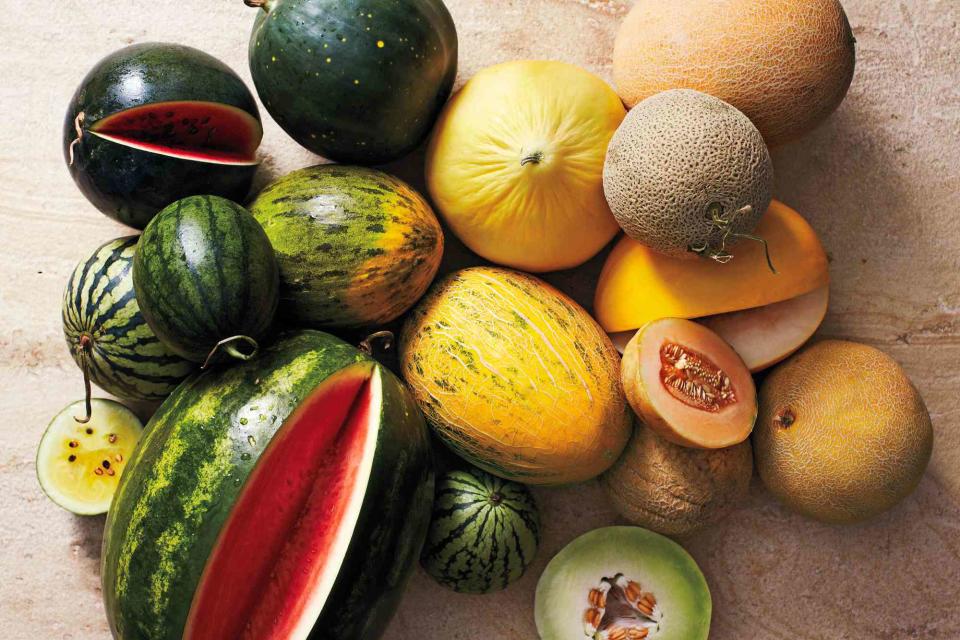
Ryan K Liebe
A summer fruit favorite, melons are the perfect sweet treat for any time of day—and there are so many types of summer melons to choose from. That's why we're breaking down 13 different types, from yellow watermelon to Charentais, that are available in the summer months. There's bound to be at least one melon that's new to you here, but once you become familiar with each, we know you won't look back. Whether you're looking to explore a new fruit or want to learn how to pick the best melon, you'll find everything you need to know below.
Related: Cantaloupe and Honeydew Recipes That Showcase the Best of These Sweet Summer Melons
Melons 101
They're juicy, aromatic, and ever so sweet—is it any wonder that melons have been cultivated for thousands of years? The fruits fall into two species:
Cucumis melo, which includes muskmelons, cantaloupes, and honeydews
Citrullus lanatus, also known as watermelons, include yellow watermelons and sugar babies, (which look similar to a classic watermelon but are slightly different)
Unique Varieties
Perhaps you're looking to try something new, like hamali. It's a long muskmelon native to China with a sweeter, crisper taste than a typical cantaloupe. Or head west and try the Charentais, otherwise known as the French cantaloupe. It's shallow seeds make for easy eating, and it has a fragrant, sweet flavor.
Picking the Perfect Melon
When it comes to selecting the perfect melon, look for locally grown options at the market through fall. It's important to note that melons don't get sweeter after they're picked, and that's true year round. Here are a few fast tricks that will help you pick the ripest melon of the bunch—but turn to our comprehensive guide to picking ripe melons for more information.
To judge the ripeness of a watermelon, tap it and listen for a dull "plunk" sound.
With honeydews and other winter melons, the blossom end should give to slight pressure.
For muskmelons and cantaloupes, sniff for a strong fruity aroma.
Now that you know how to choose the best melon, put one of the following varieties on your radar so you're prepared the next time you hit the farmers' market.
Seedless Watermelon
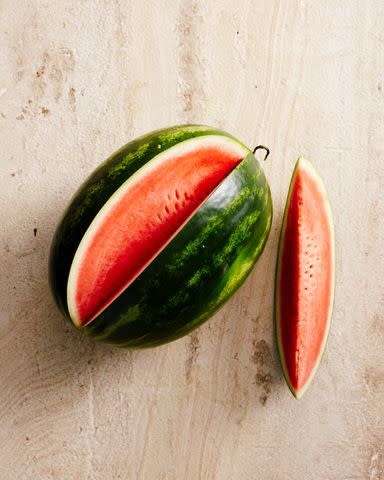
While not entirely seedless (it has soft, white immature seeds), this variety has become increasingly popular since its hybridization more than 60 years ago. Red watermelons contain the highest level of the antioxidant lycopene per serving of any fruit or vegetable. They typically weigh in at around 8 to 12 pounds.
Yellow Watermelon
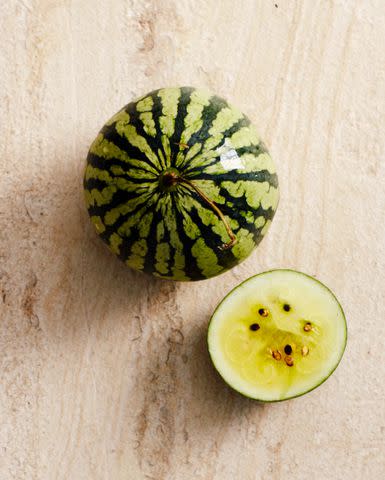
Its yellow-fleshed fruit has a more honeyed, mellow taste than that of its red counterpart. Chill it a few hours before serving for a thirst-quenching treat (remember, watermelons are 92 percent water!). Depending on the variety, yellow watermelons may be as small as 6 pounds or as large as over 20 pounds.
Sugar Baby
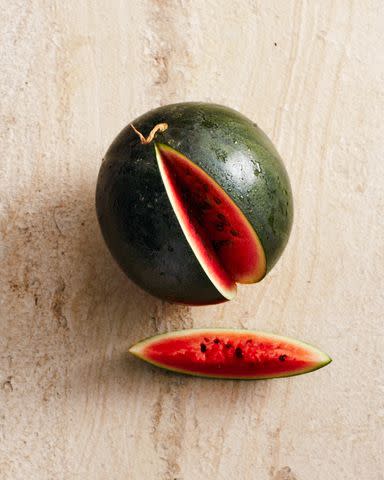
Though this watermelon is small (typically only 6 to 12 pounds), it more than makes up for its diminutive size with an intense, concentrated flavor. Since it grows compactly, it saves space in the garden and, after harvesting, in the refrigerator.
Santa Claus
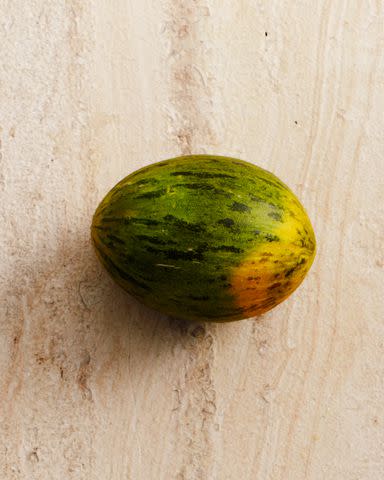
Also known as piel de sapo or Christmas melon—because it's harvested later in the season and can keep through the holidays—this melon is subtler than other varieties. The yellower the rind, the sweeter the fruit. Its average weight is 6 to 9 pounds.
Moon and Stars
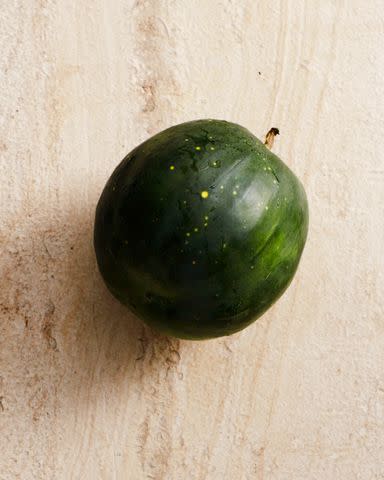
Named for its speckled rind that resembles the night sky, this old-fashioned watermelon weighs in anywhere from 10 to 50 pounds. It has bright-pink flesh, large seeds, and a robust flavor.
Hami
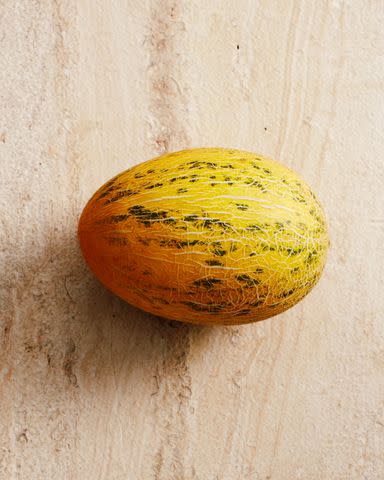
Native to China, this elongated muskmelon tastes like a cantaloupe but boasts sweeter, crisper flesh. Adding a squeeze of lime juice helps balance out the sugariness. Hami melons weigh 6 to 11 pounds.
Crenshaw
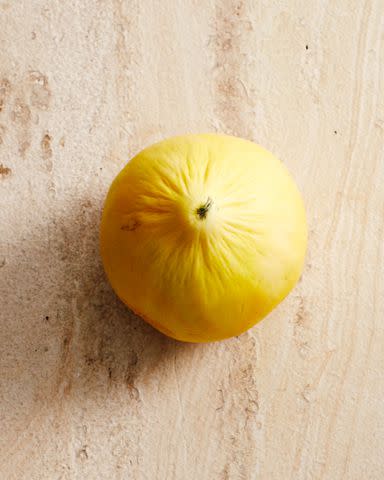
One of the sweetest varieties available, the Crenshaw ripens from midsummer through autumn and weighs in around 8 to 10 pounds. The thick, pink-orange flesh has a heady aroma and works well with prosciutto and other charcuterie.
Honeydew
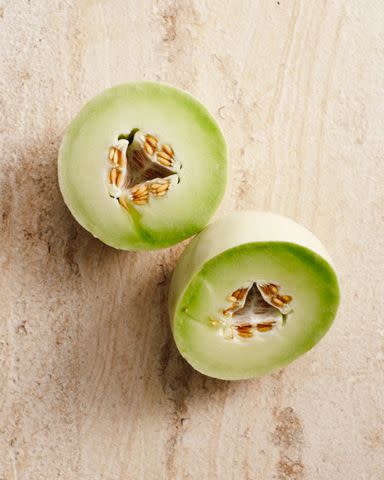
A supermarket staple, the smooth-skinned honeydew melon weighs 4 to 8 pounds and lasts a long time thanks to its hard rind. Honeydews don't have as strong a fragrance as muskmelons, but they can be equally sweet.
Charentais
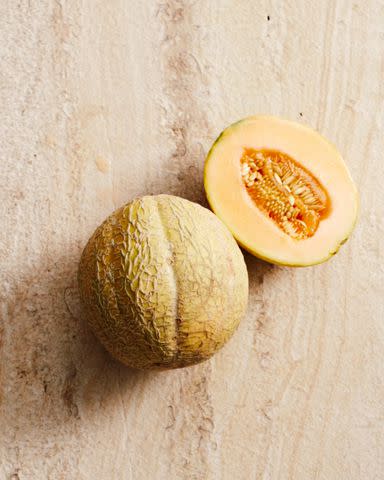
Also known as a French cantaloupe, this highly fragrant melon features firm dark-orange flesh, enticing musky notes, and a shallow seed cavity. The petite and relatively delicate variety (typically the size of a grapefruit and weighing 2 to 3 pounds) doesn't ship well, so it's best found locally or grown at home.
Canary
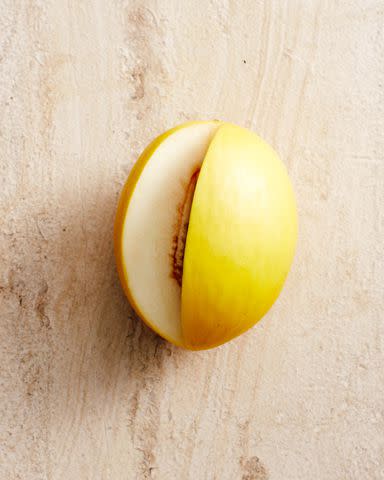
The oblong yellow fruit resembles a cantaloupe in flavor but has a pleasant tanginess. Like honeydews and other winter melons, it will start to ripen toward the end of summer and continue through the beginning of autumn. The average weight is 4 to 5 pounds.
Muskmelon
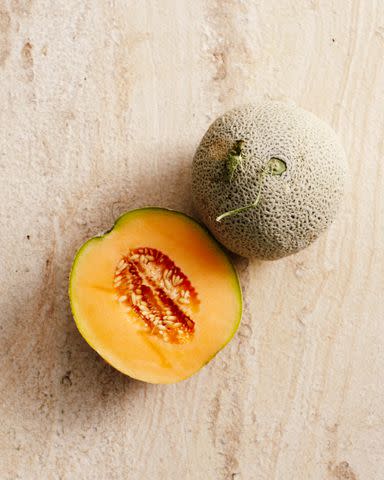
Supermarkets often sell them as cantaloupes, but these melons, originating from Iran, are actually muskmelons. The aromatic fruit starts appearing in markets come June and weigh on average 4 to 8 pounds.
Sharlyn
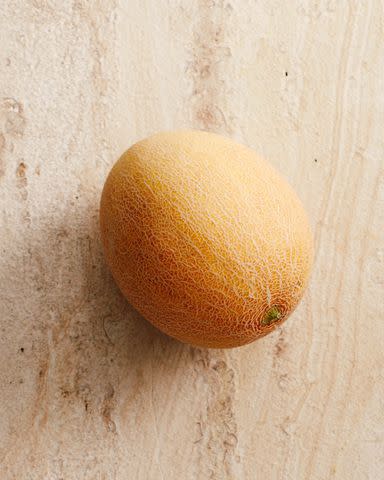
Featuring a floral perfume, this oblong melon weighs 3 to 5 pounds and is admired for its restrained, pineapple-like taste and a smooth texture that almost melts in your mouth.
Galia
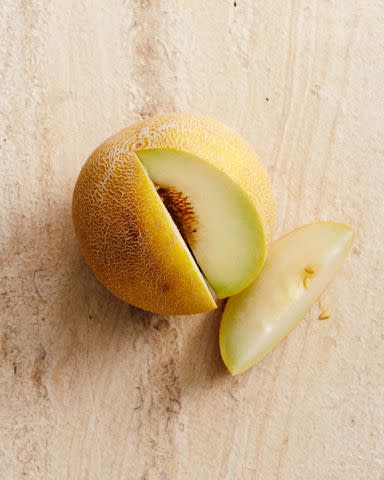
An Israeli hybrid, the Galia weighs 2 to 3 pounds and has a netted rind like that of cantaloupes with smooth lime-green flesh like that of honeydews. Its sweet banana flavor pairs well with tart summer fruits.

